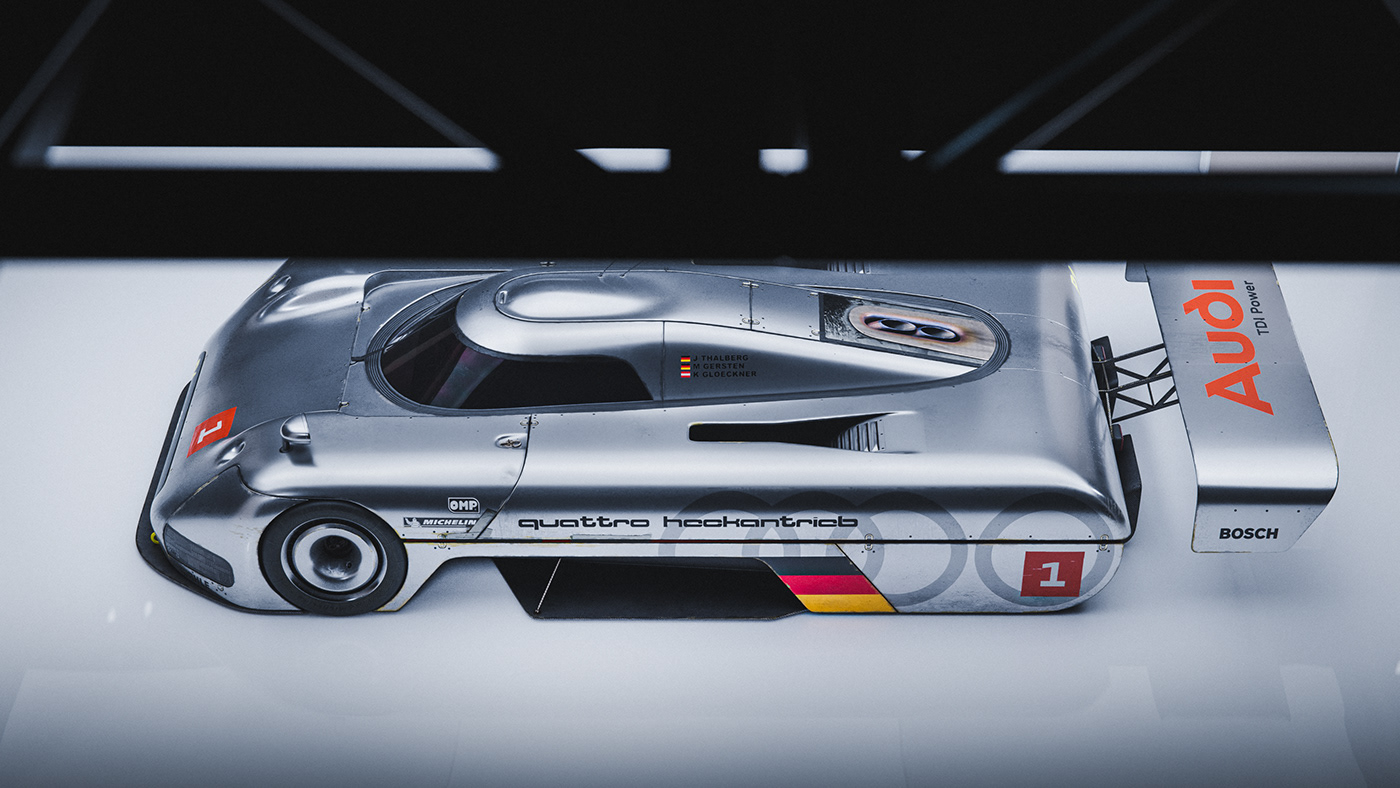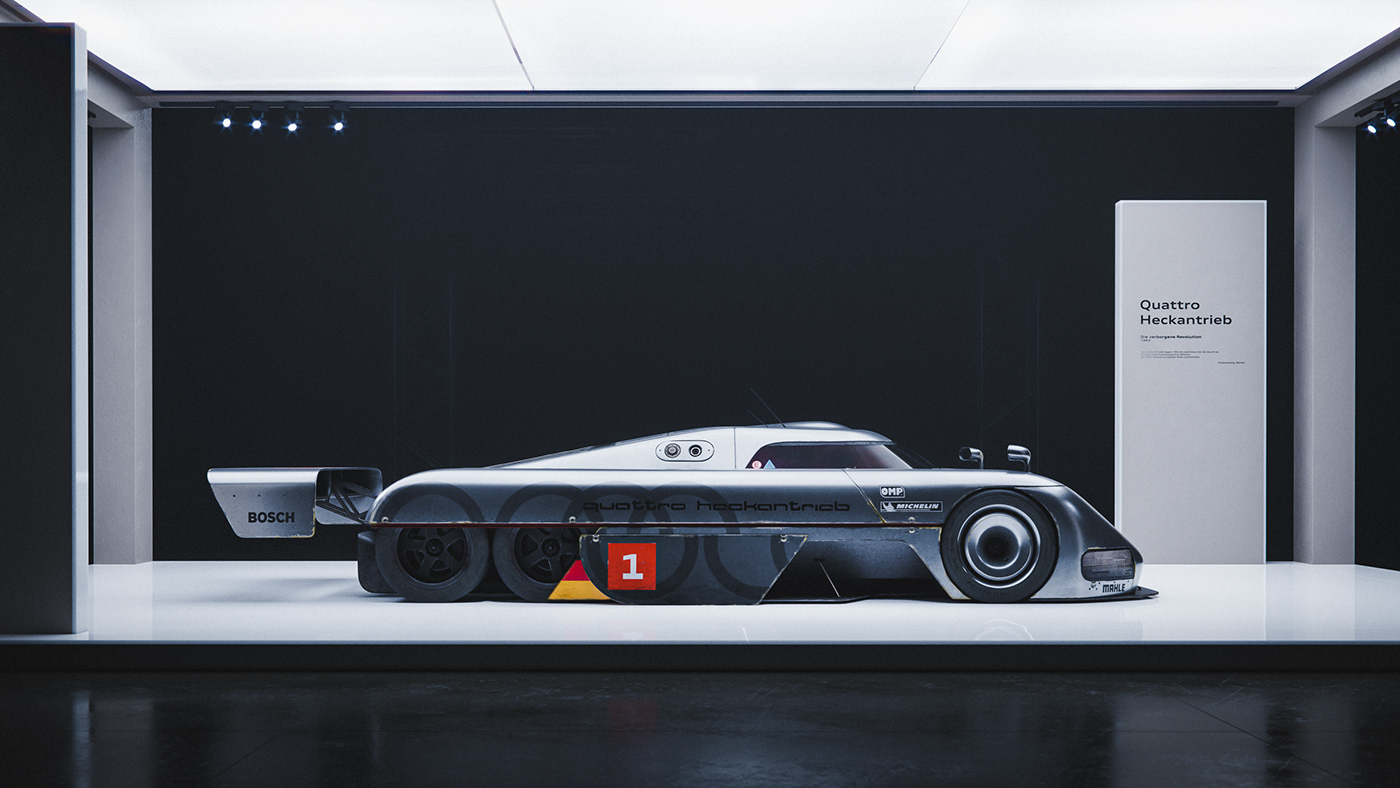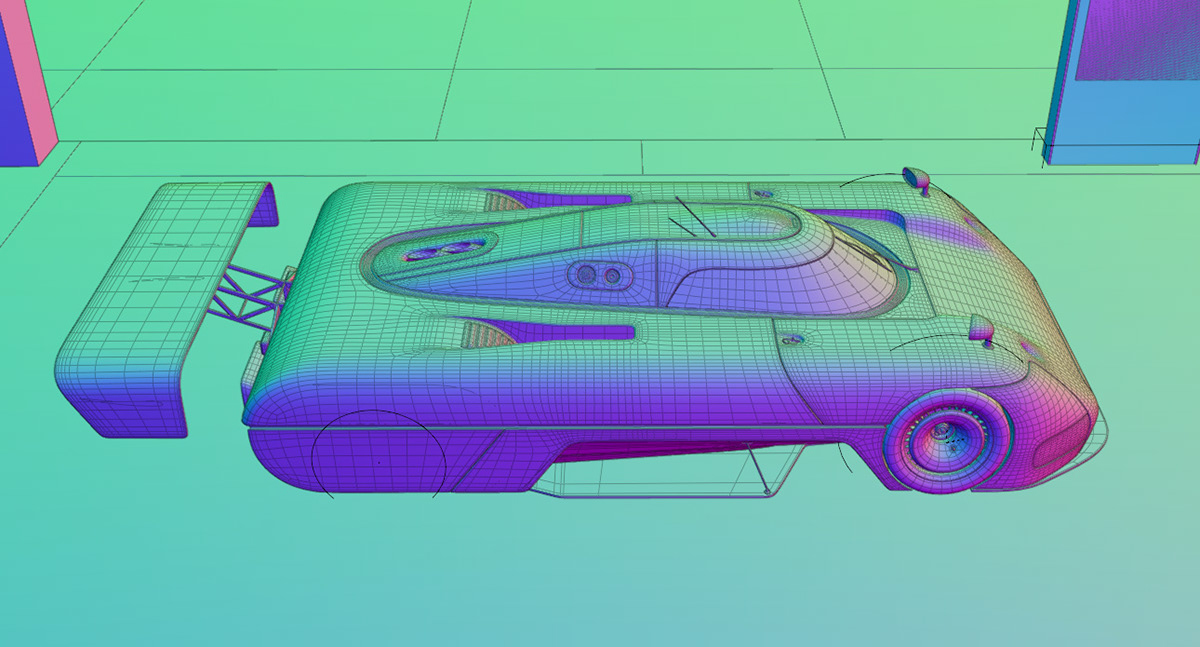
The Quattro H project began in 1993 with a clear goal:
to define the future of endurance racing.

The body was made of fiberglass, kevlar and carbon fiber; its slick lines were meant to mantain the airflow as laminar as possible. Naca and ram ducts were used to feed the engine without ruining the aero.


A floating cockpit hosted the pilot.
The cell - essentially an isolated monocoque - was connected to the main chassis by a heavy duty gasket; the cockpit barycenter was lowered by a ballast, naturally aligning the pilot against lateral forces.
This system greatly dampened solicitations to the pilot, allowing the car to be stiffer and lower.




H was short for Heckantrieb, german word for rear wheel drive. The sideskirts hid two driving axles, which had the task of discharging to the ground the torque generated by the diesel power unit.
The Quattro H was a 4-rear-wheel-drive to all effects.

Three working prototypes were produced and a simulation of a 24h race was run by 9 pilots at Nürburgring.
All the cars completed the race with no issues.
All the cars completed the race with no issues.







This is the 4th entry in my series on fictional prototypes.
Made with love in Blender, Substance Painter, Lightroom.

Cheers 🙂






